The White Mountains
The White Mountains are the highest range in the Basin and Range geological region. It is also home to the third highest mountain in California, called White Mountain Peak, at 12,252 ft. This is surprising because it is not in the Sierra Nevada Mountains, home of Mt. Whitney, the highest peak in the continental U.S. at 14,505 ft.
Many people come to hike this peak because it is so much easier to reach than Mt. Whitney. I have also heard it is a lot more boring, though I cannot confirm this since I haven’t hiked up either one of them yet.
Sunrise here is amazing! Below is a panoramic photo looking to the east from within the White Mountains out towards the Basin and Range region in Nevada. Crepuscular rays are seen radiating outward and upward.
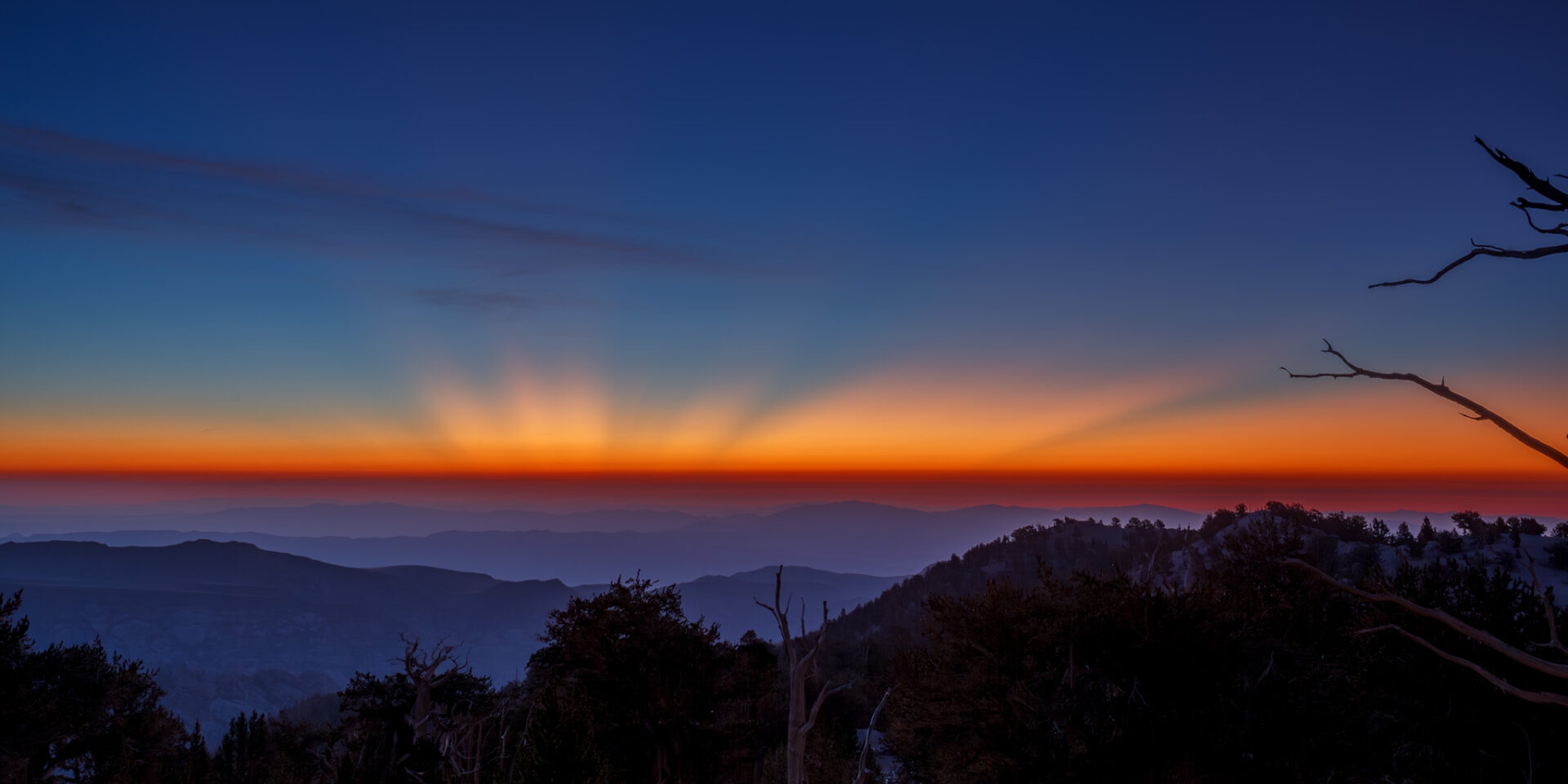
When you get above treeline in these mountains, there is no vegetation, just a lot of rocks. It begins to look more like a moonscape. Below is a panoramic photo, from above 12,000 ft elevation looking towards White Mountain Peak.
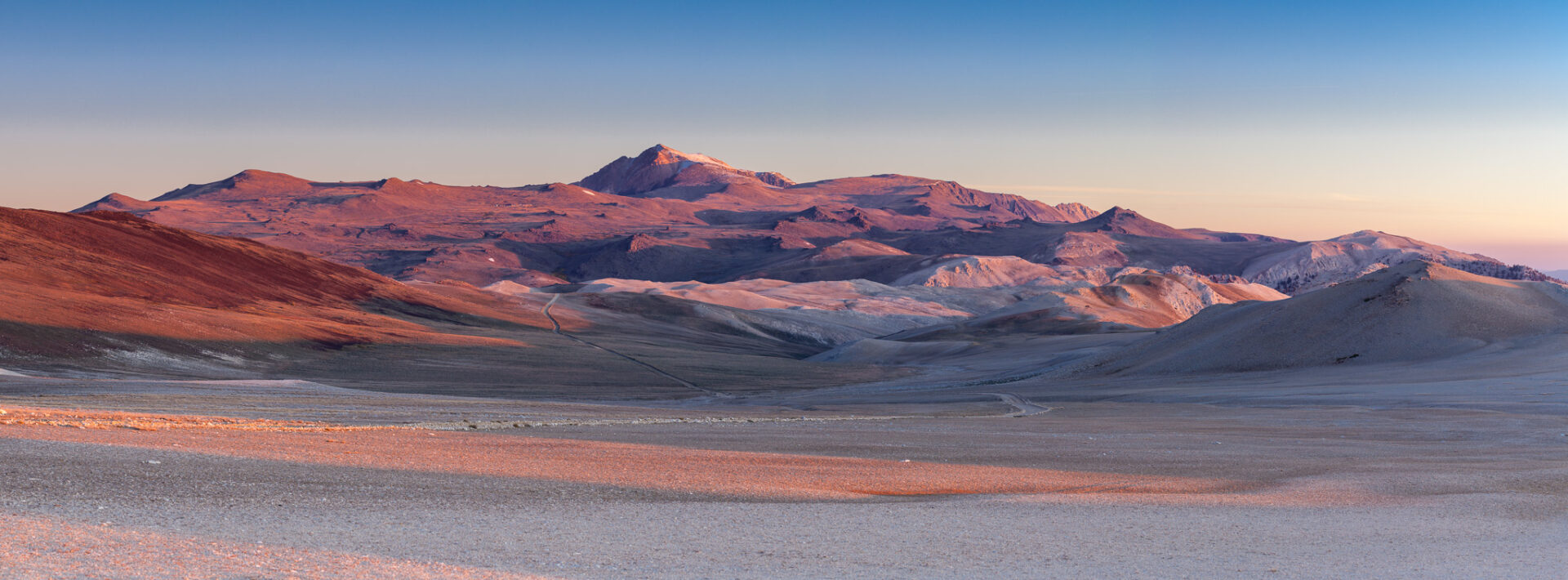
The Ancients
There are two primary locations where the truly ancient trees live. One is the Ancient Bristlecone Pine Forest located in the White Mountains of California. The other is Great Basin National Park in Nevada. Pinus longaeva, also known as the Great Basin Bristlecone Pine does live in other high peaks throughout California, Nevada, and parts of Utah.
One of the oldest non-clonal trees in the world, Methuselah (4,856 years old), lives in the Ancient Bristlecone Pine Forest along the Methuselah Trail in the Schulman Grove. On Wheeler Peak in the Great Basin National Park, an even older tree (Prometheus), was cut down for research in 1964. It wasn’t until it was cut down that they realized how truly ancient (estimated at over 4,900 years old) it was.
There are also references to the tree who shall not been named, discovered in 2012 and estimated at 5,065 years old in the same general area as Methuselah. Certainly, even older trees will be found in the future. For more info on the oldest trees, checkout this link on livescience.com.
Below are some photos of Bristlecone Pines in Schulman Grove along the Methuselah trail.
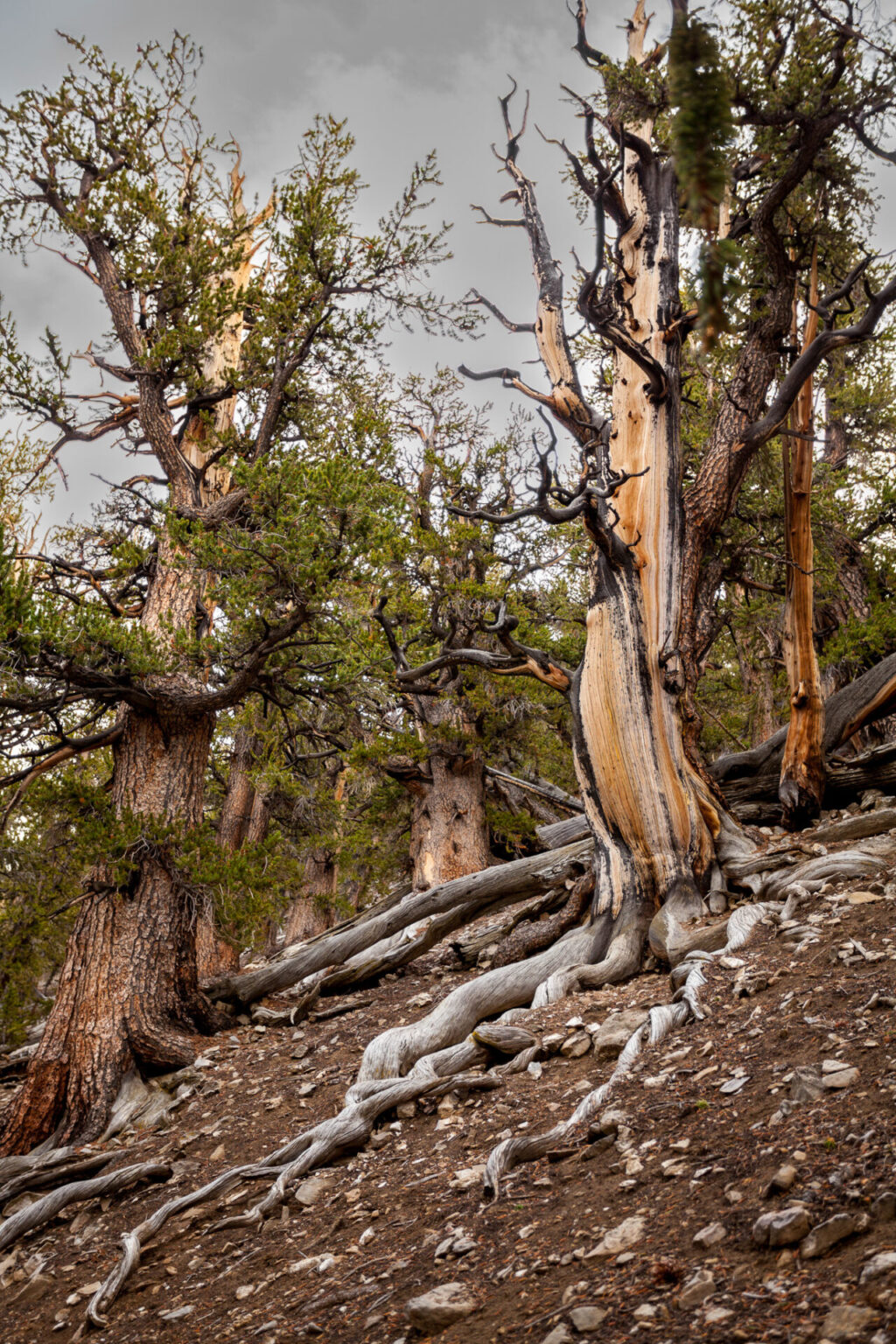
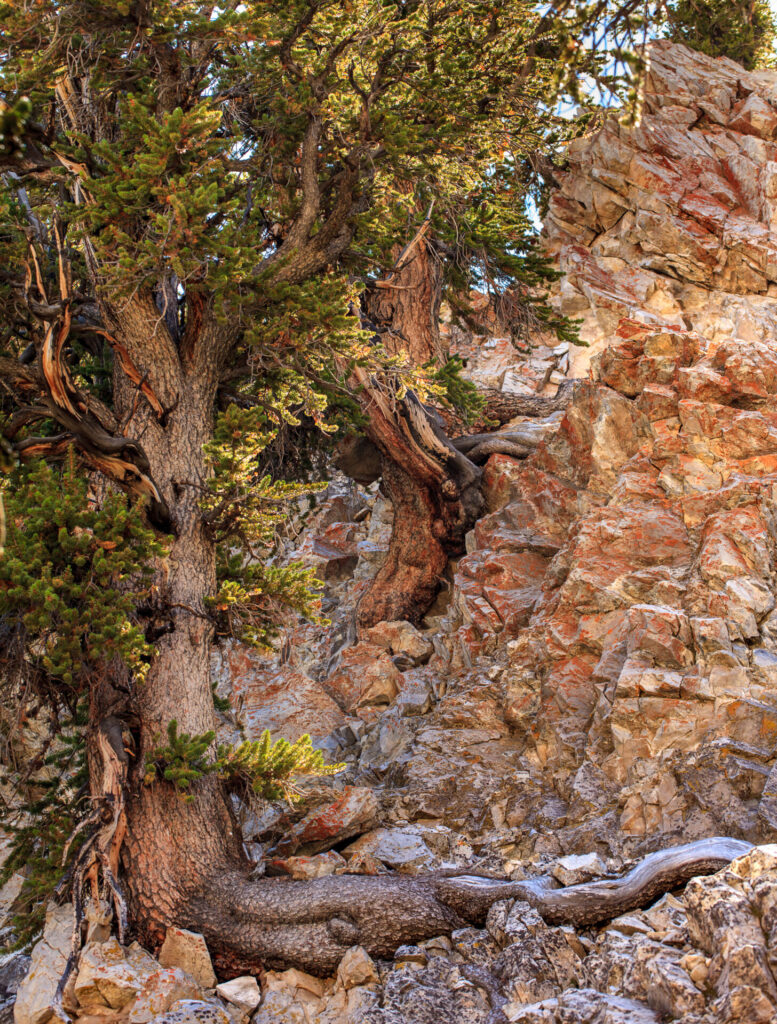
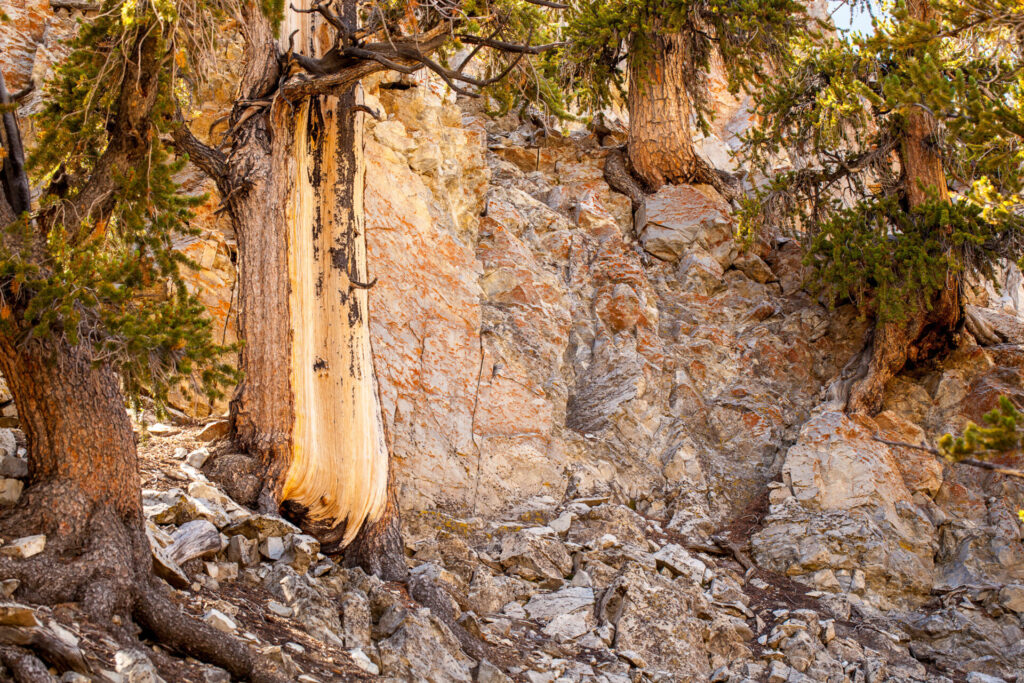
The Patriarch Grove
During the workshop, we would stay further out, closer to the Patriarch Grove, where we spent most of our time photographing. There is a UC Research Station with some basic accommodations and a cook that our instructor had arranged for us to use. The cook was fantastic, by the way.
The Patriarch Grove is more remote so we could get out early and have the place to ourselves. Or we could stay out late into the night to do a little light painting and capture star trails. Below is a sampling of photos from the Patriarch Grove.
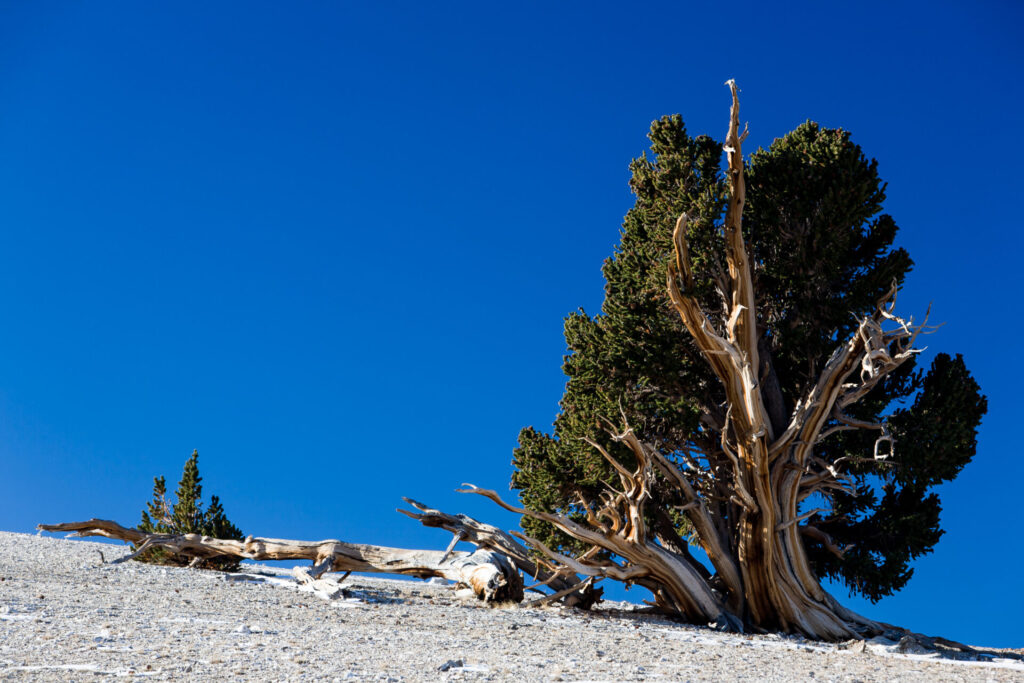
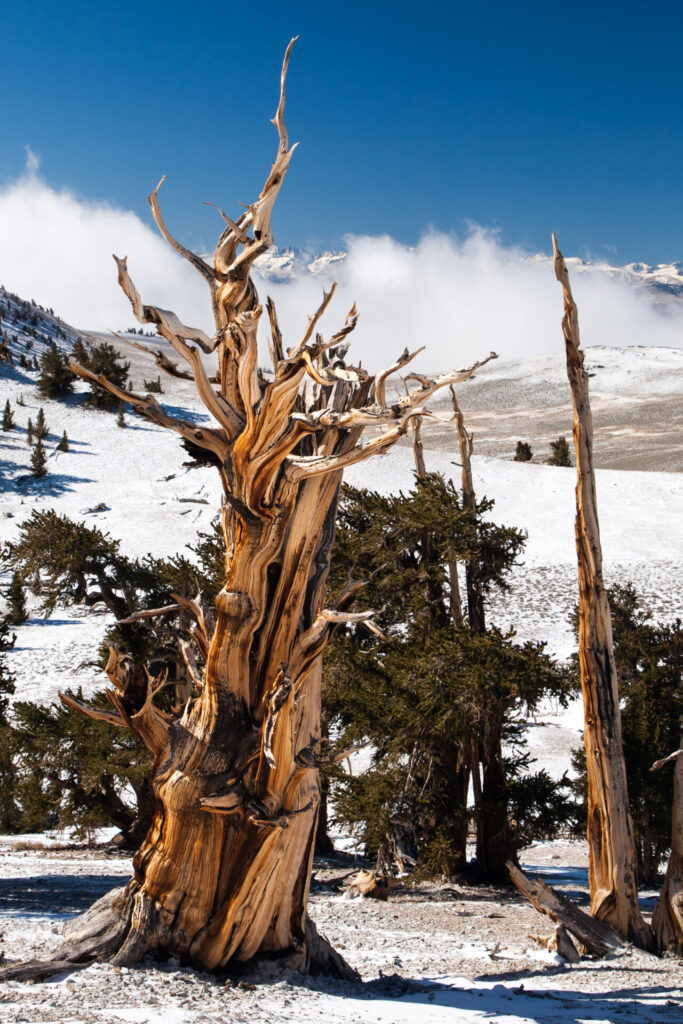
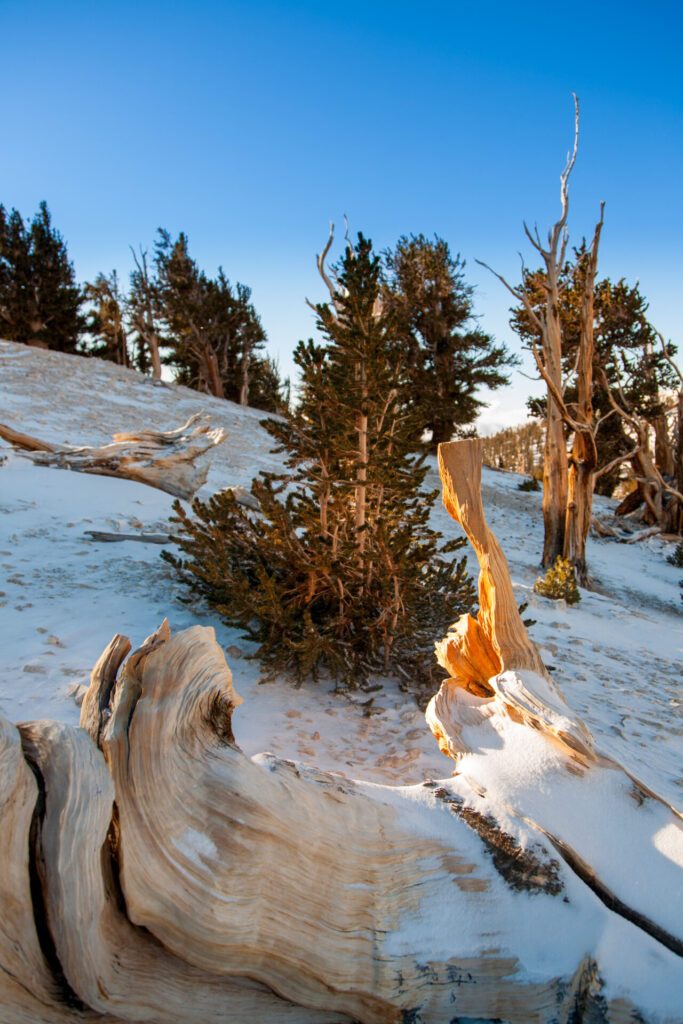
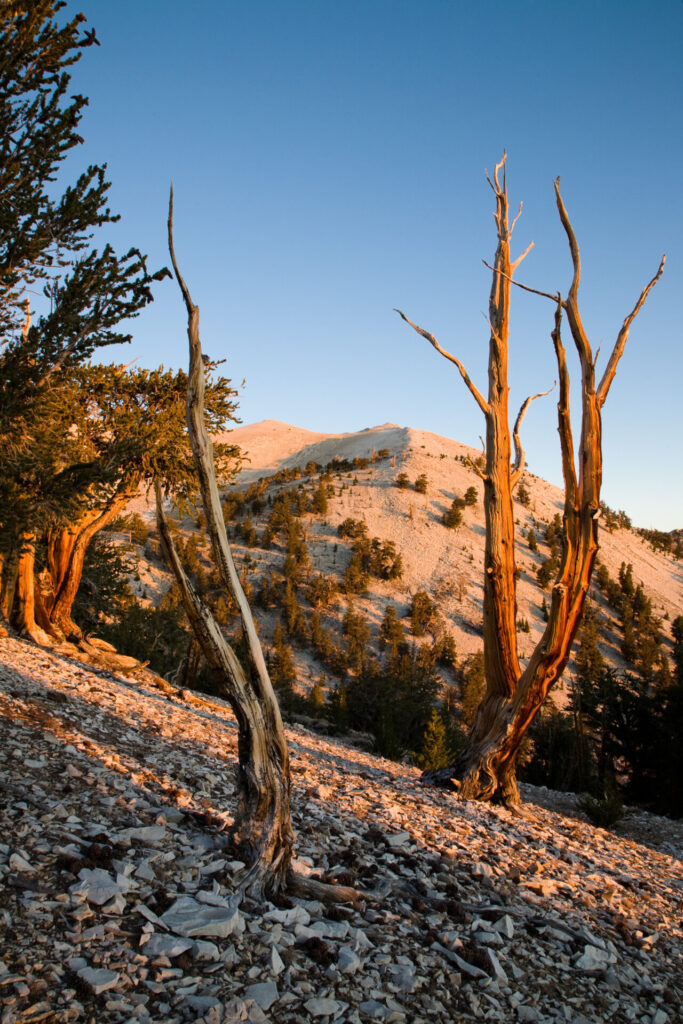
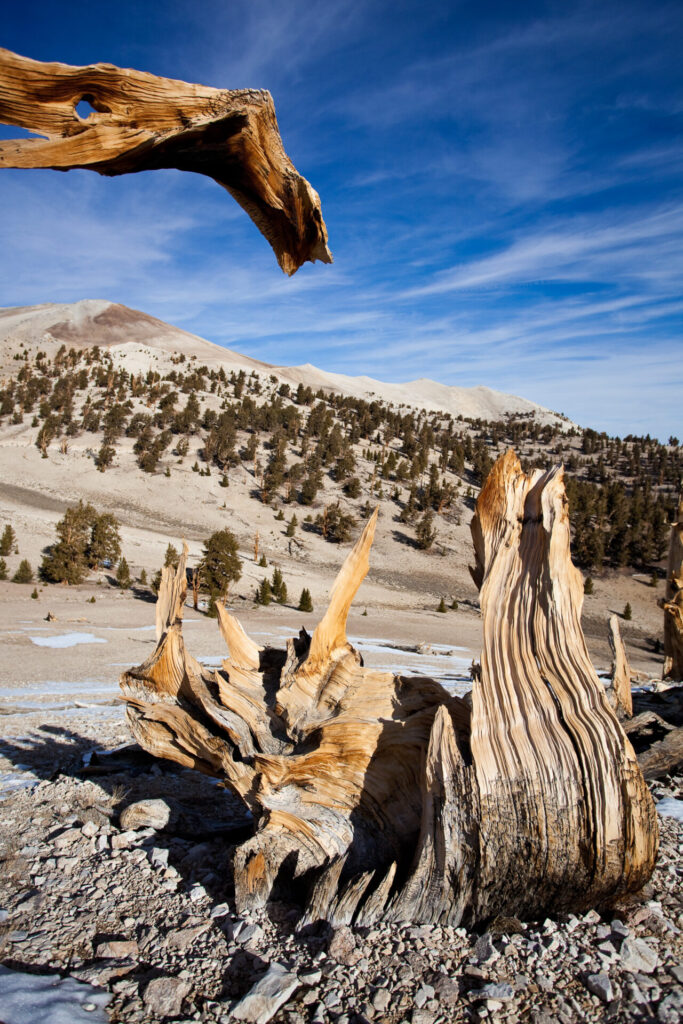
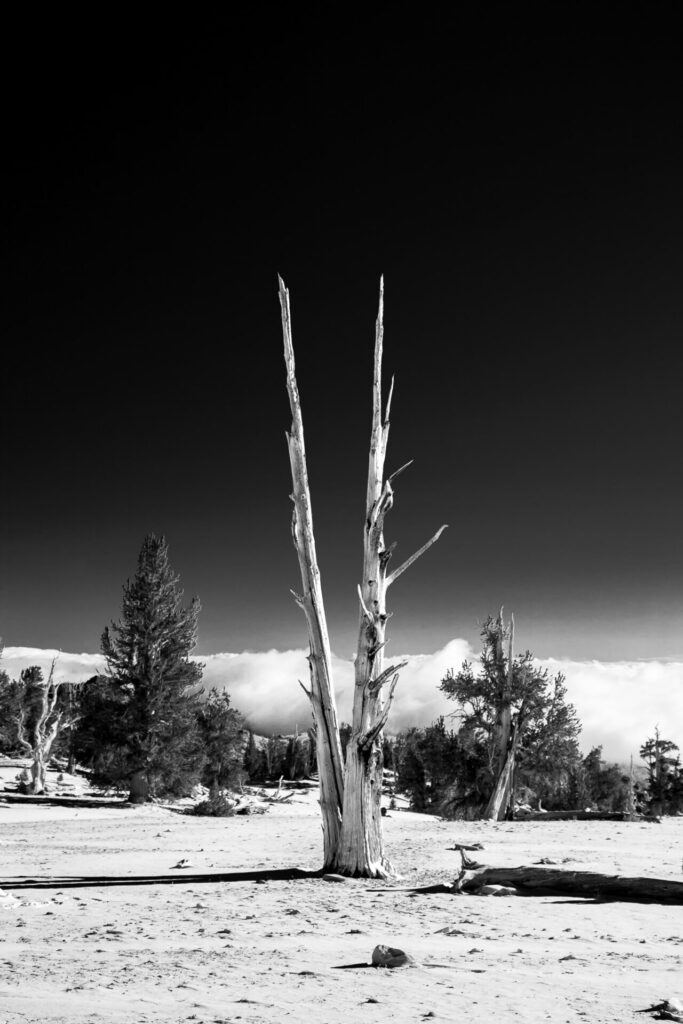
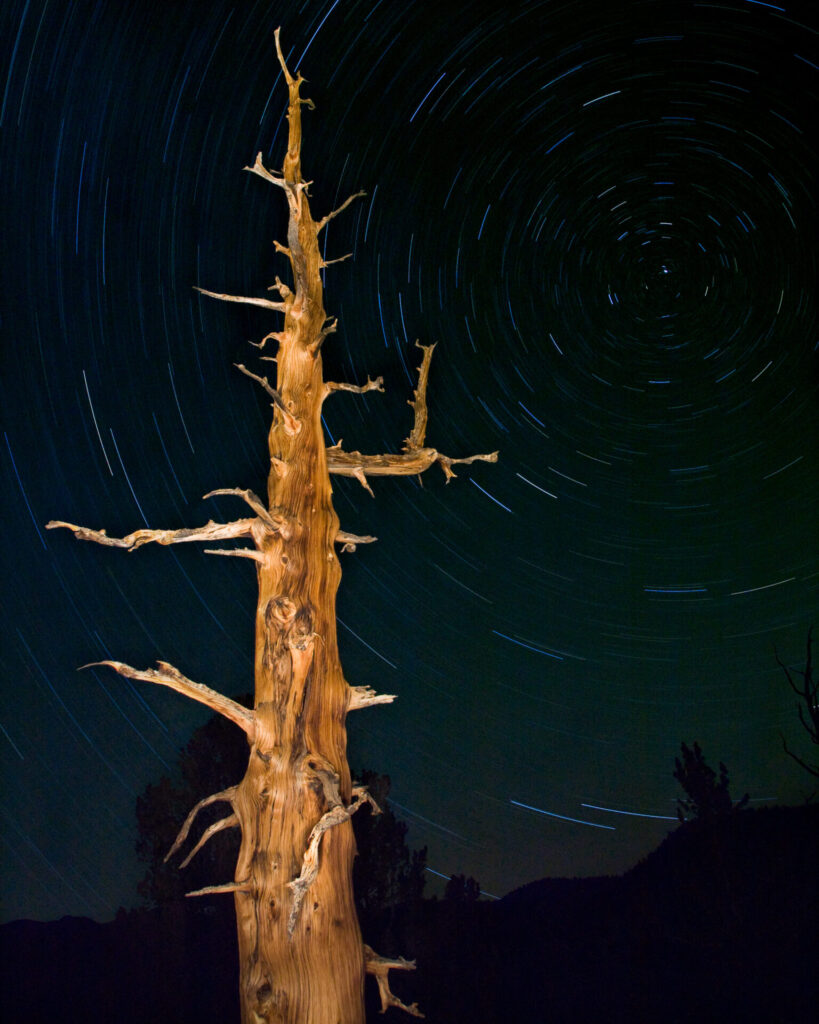
The Later Years
After my first few visits, the instructor retired, leaving me wondering what to do. Since I was an officer in the college’s photography club, I decided to contact the Research Station coordinator myself. From that point, I led the workshop for the photography club for the next few years.
This gave me the opportunity to explore other locations in the forest where I found some other interesting trees, such as the one in the photo below.
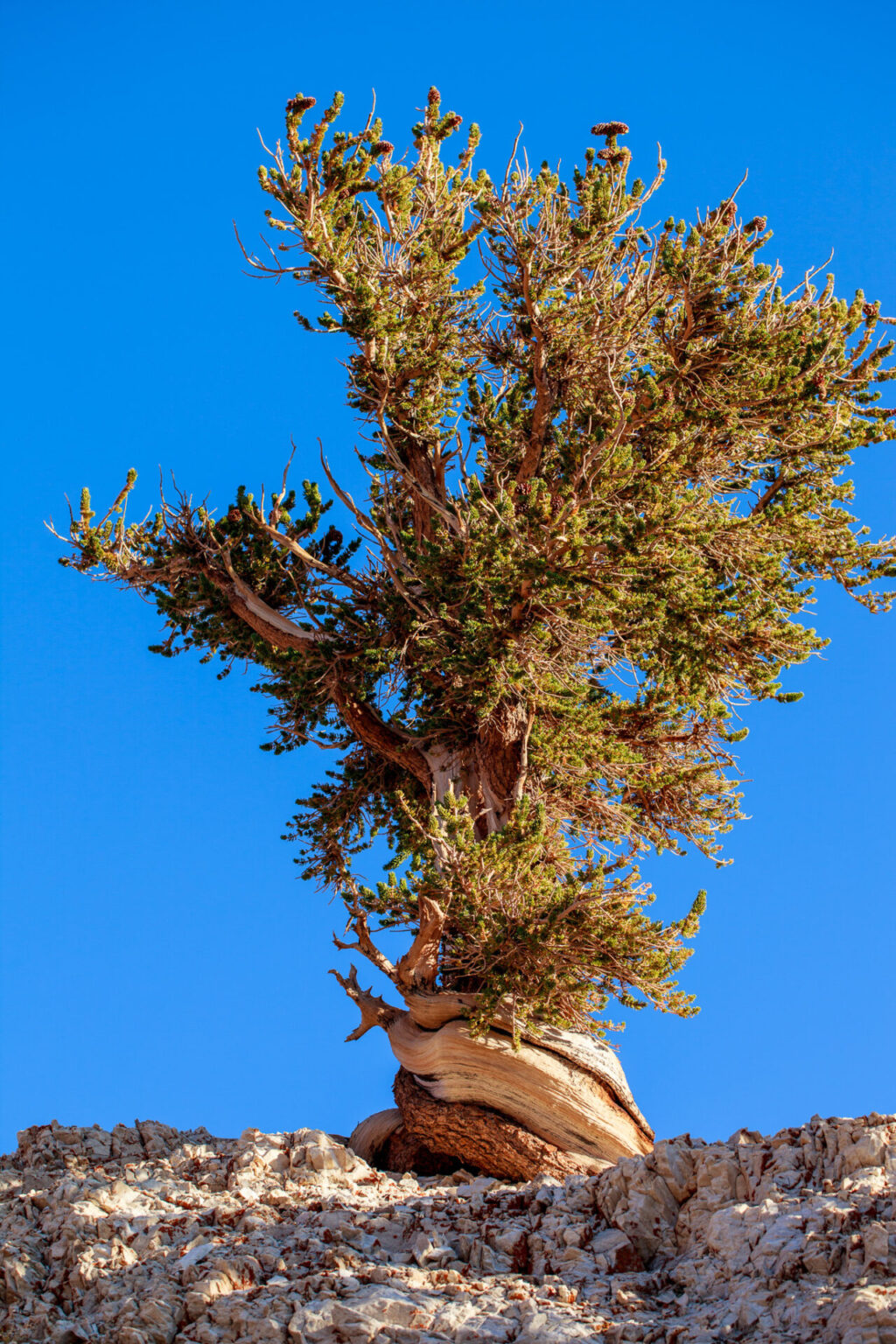
I also had the opportunity to pursue a photographic theme I had developed. A very interesting aspect of Bristlecones is the very dense nature of their wood. This is another reason they can survive such harsh conditions. This also, makes their wood very beautiful. The theme was taking close up photos of the wood, finding interesting abstract forms.
My first shots from earlier years were all black & white film photographs with my Mamiya 7. I have to say I felt they were my best work, being true fine art photographs. Mixing my own chemicals to make developer and matching them to different papers, produced some spectacular results.
In later years, I could add some color photos to the theme. Below are some digital color photographs I made from those times.

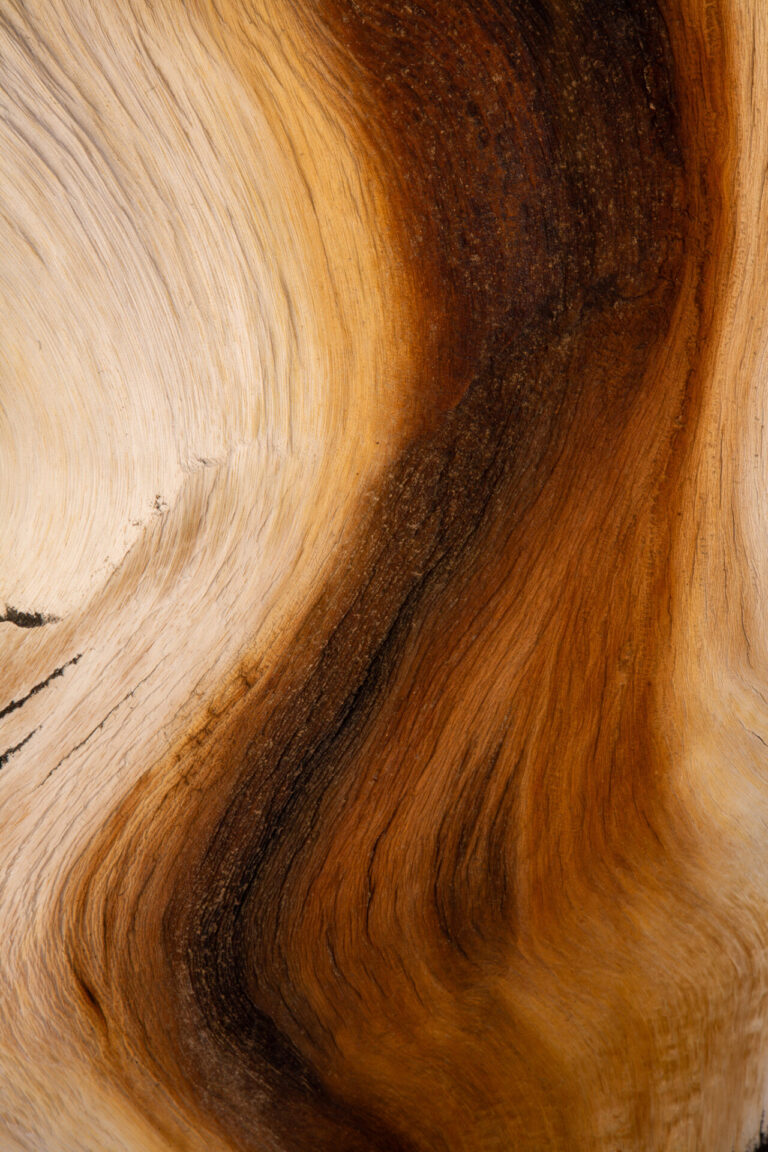
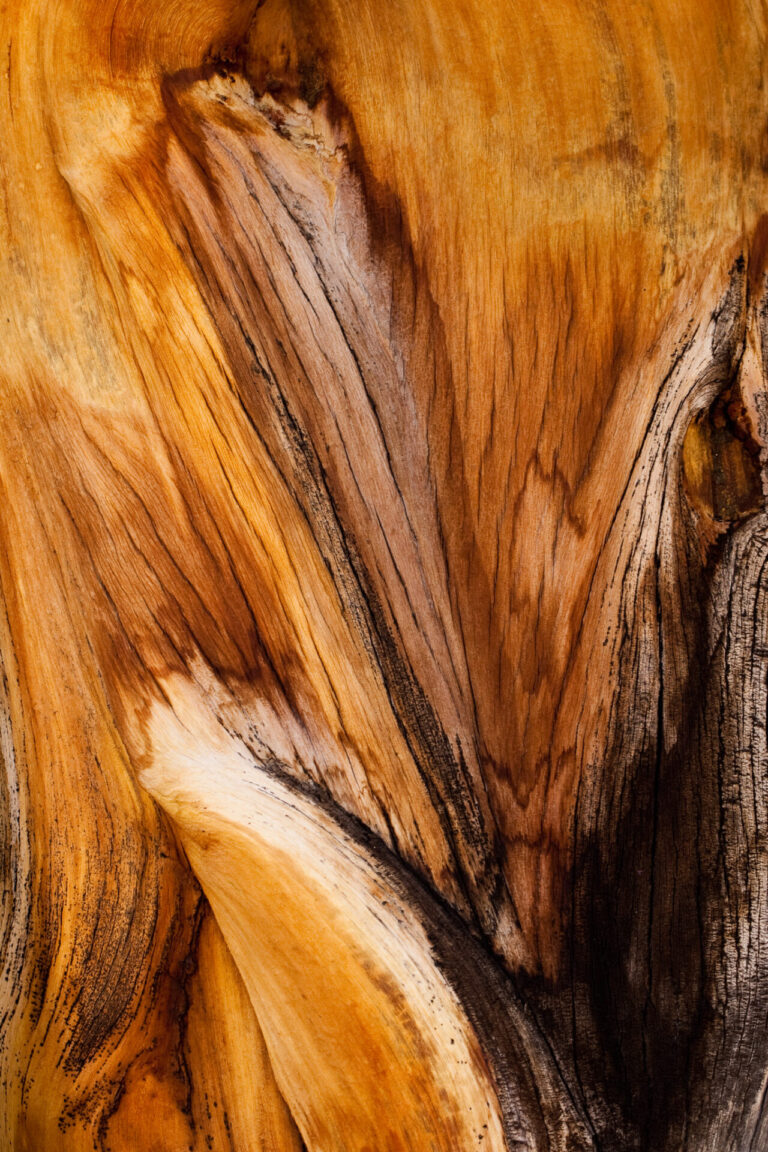
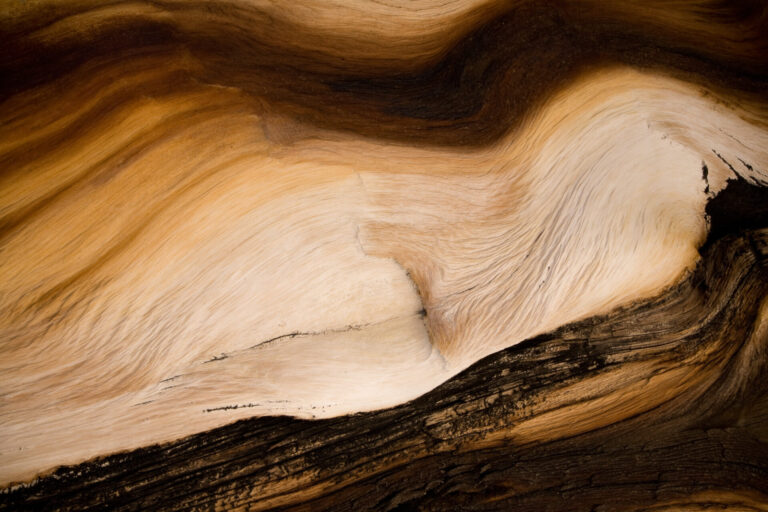
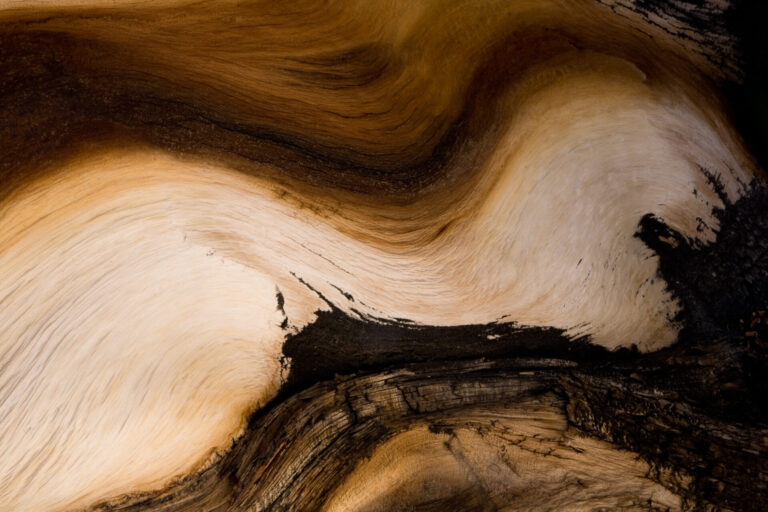
A Final Thought
If you made it this far into my blog post, I want to thank you for enjoying my photos and reading about these wonderful trees. My next blog post will cover Bristlecones in Cedar Breaks National Monument. I would like to leave you with one final thought. When you are in the forest looking at the trees, always remember that the trees may also be looking at you.
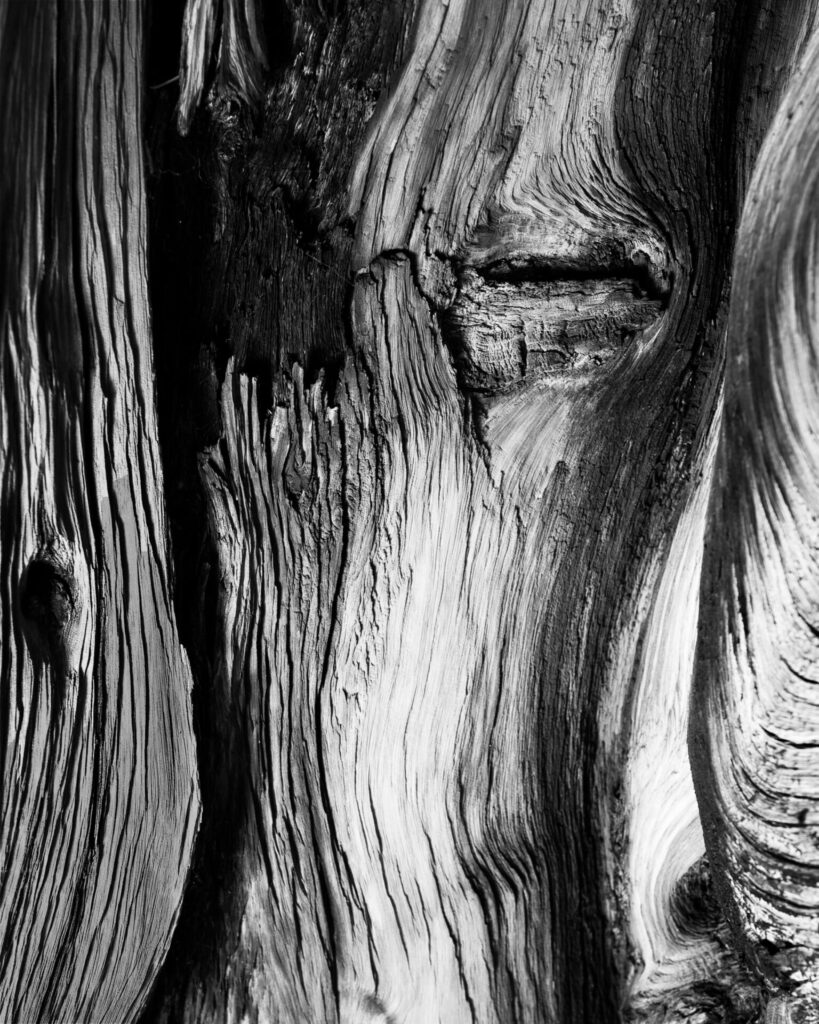
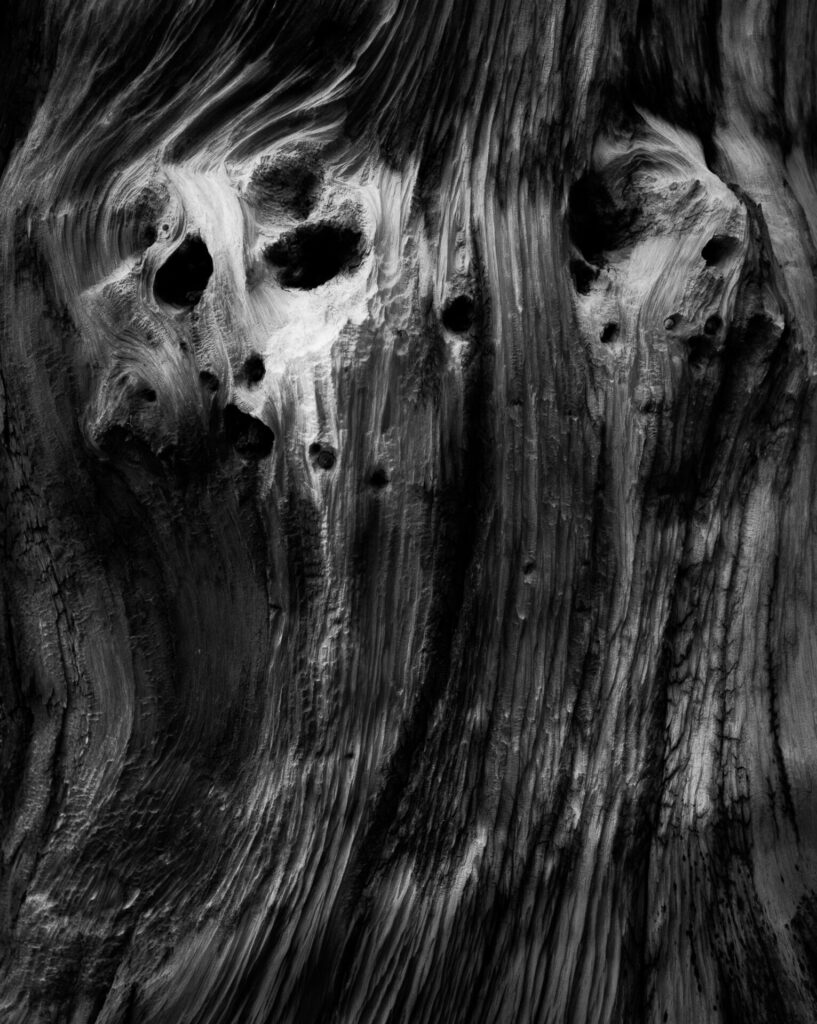

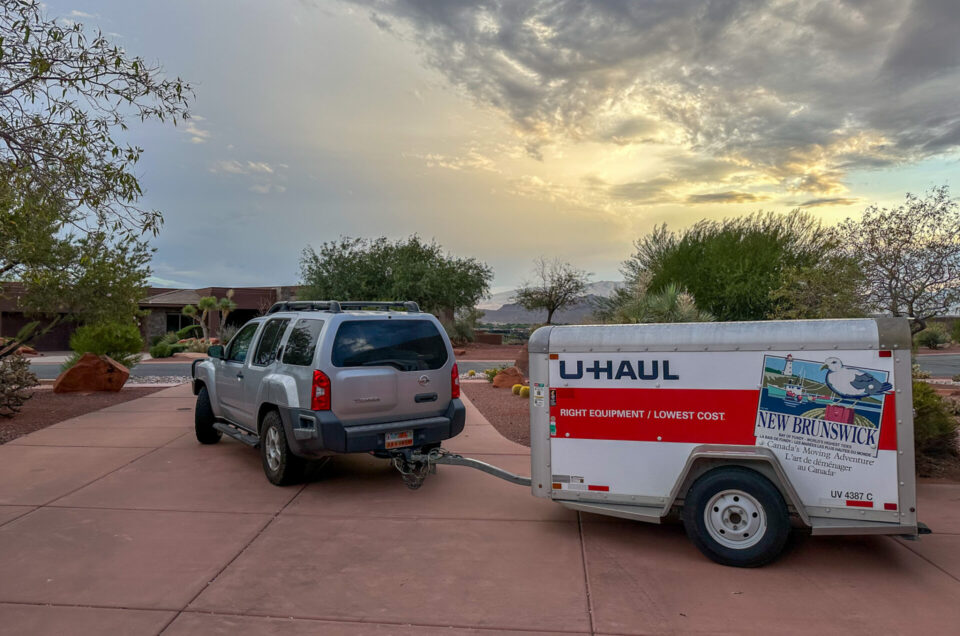
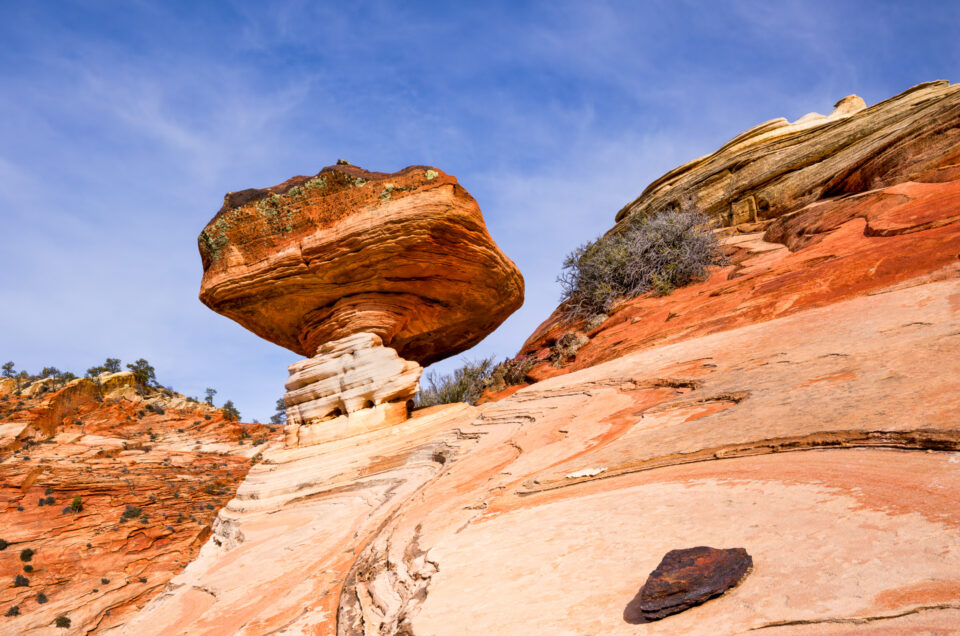
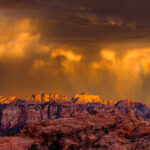
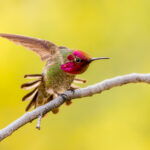
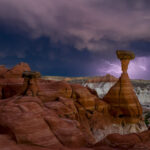
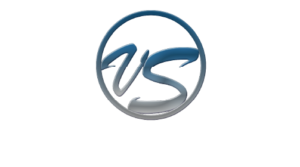
Leave a reply